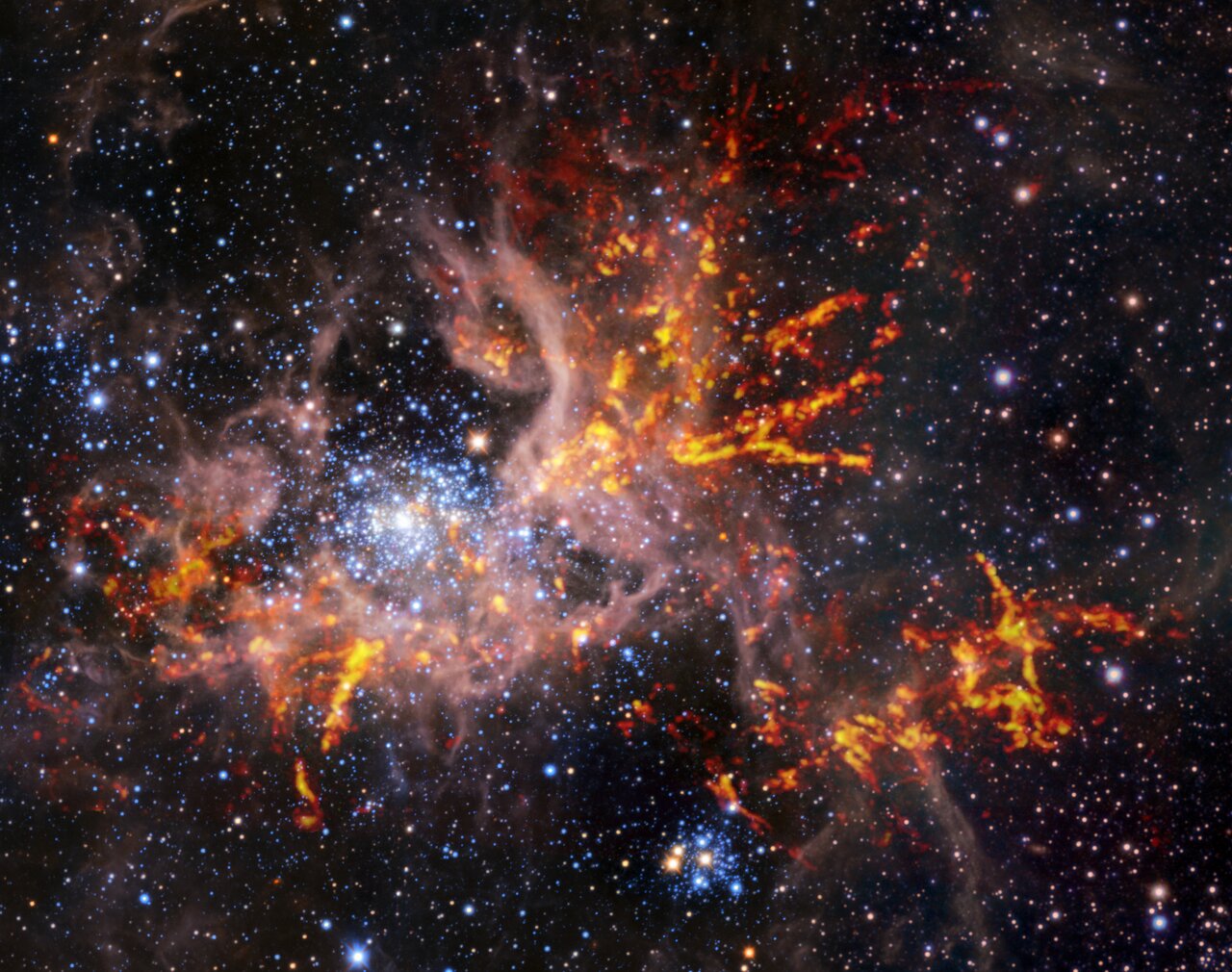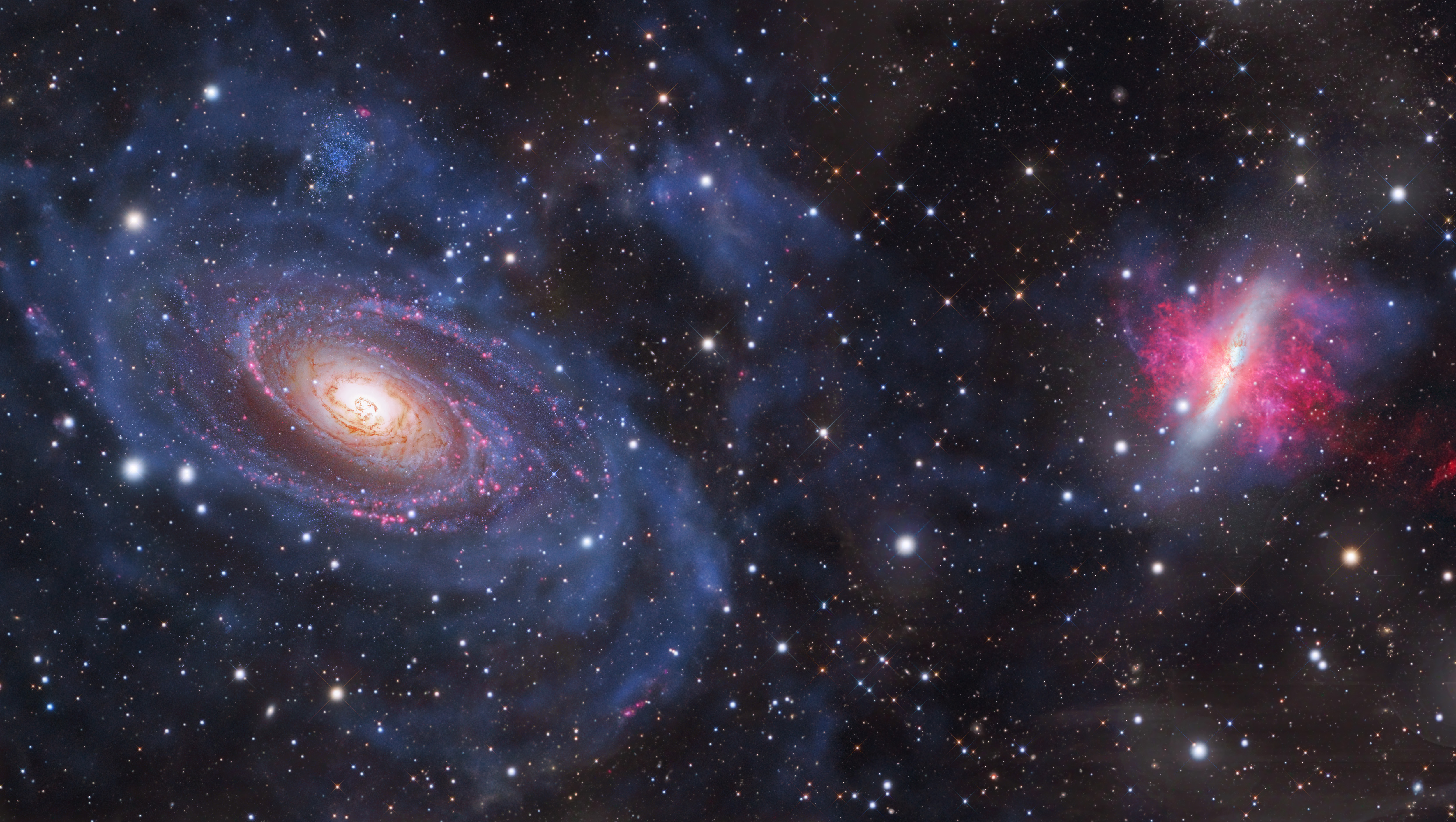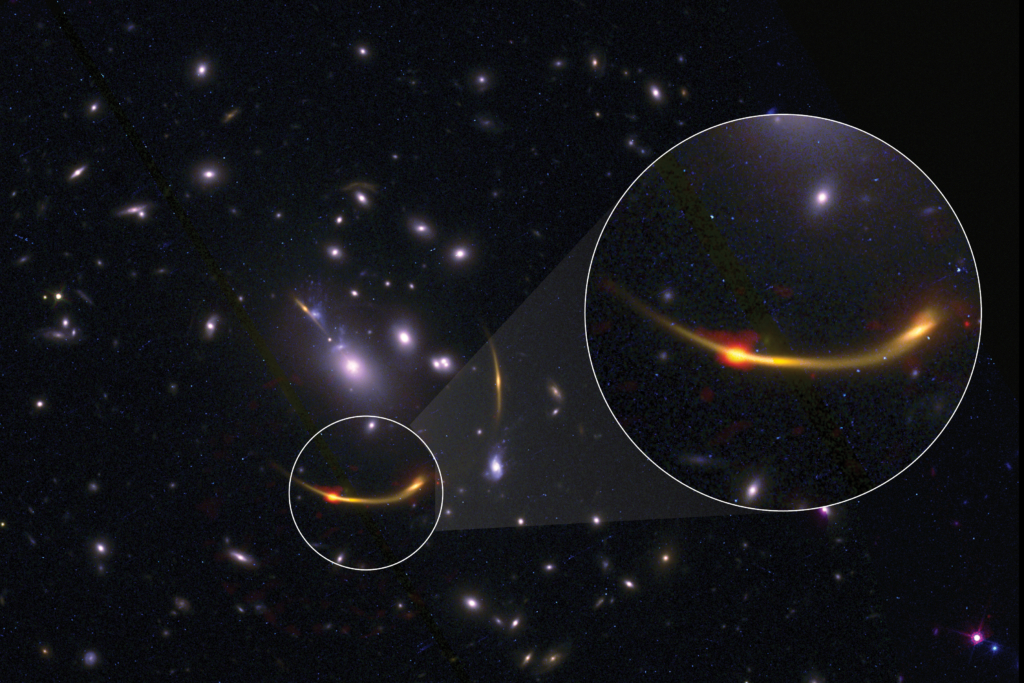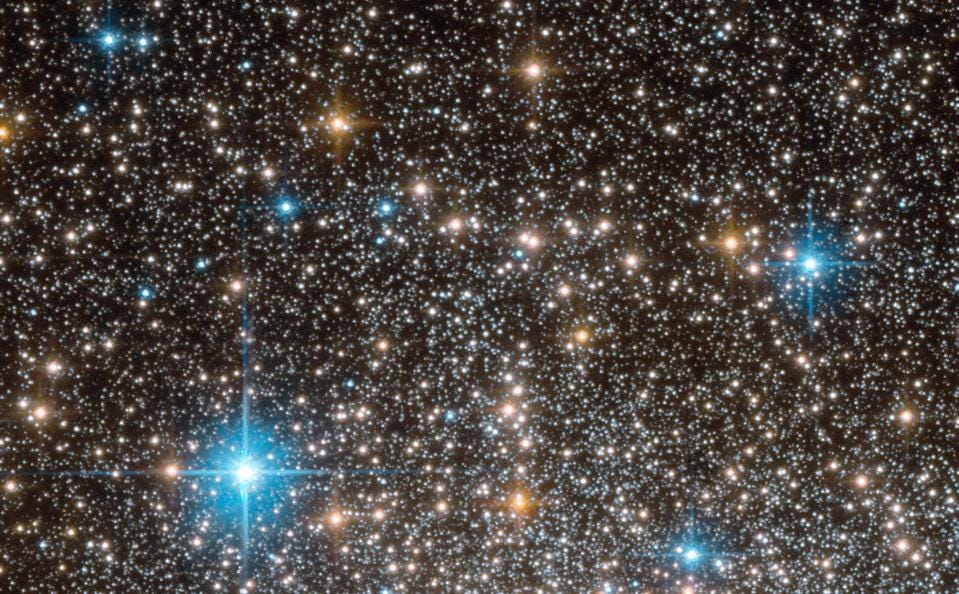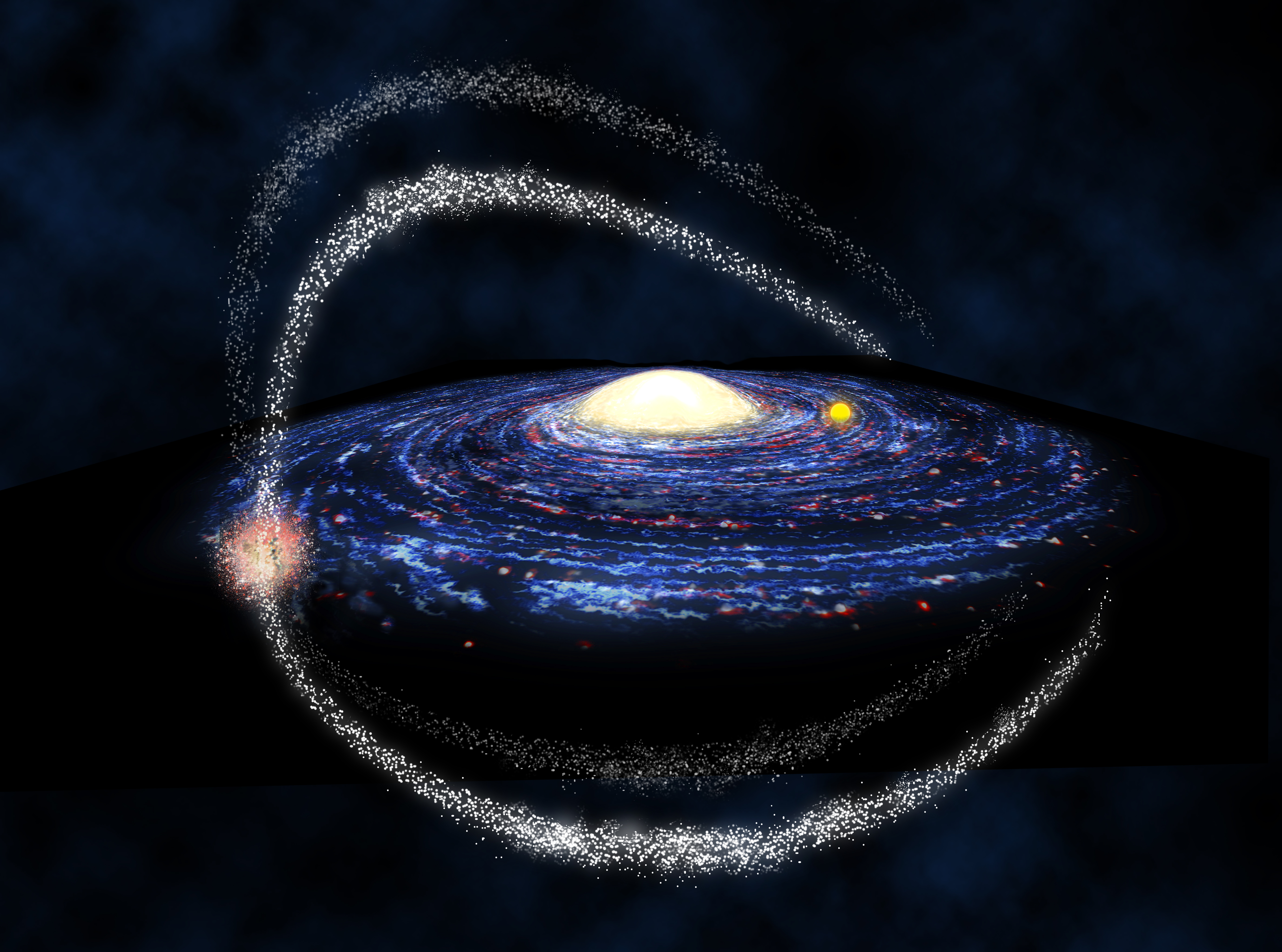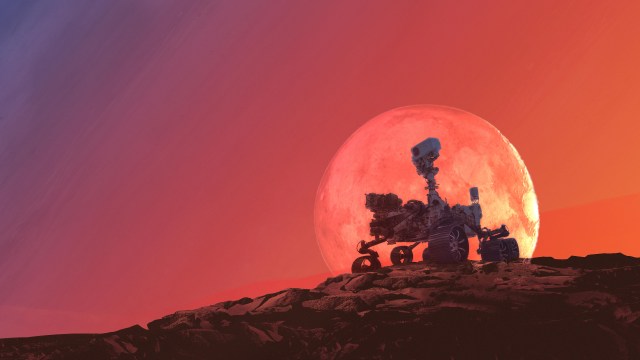The secret race exposed inside the Pillars of Creation
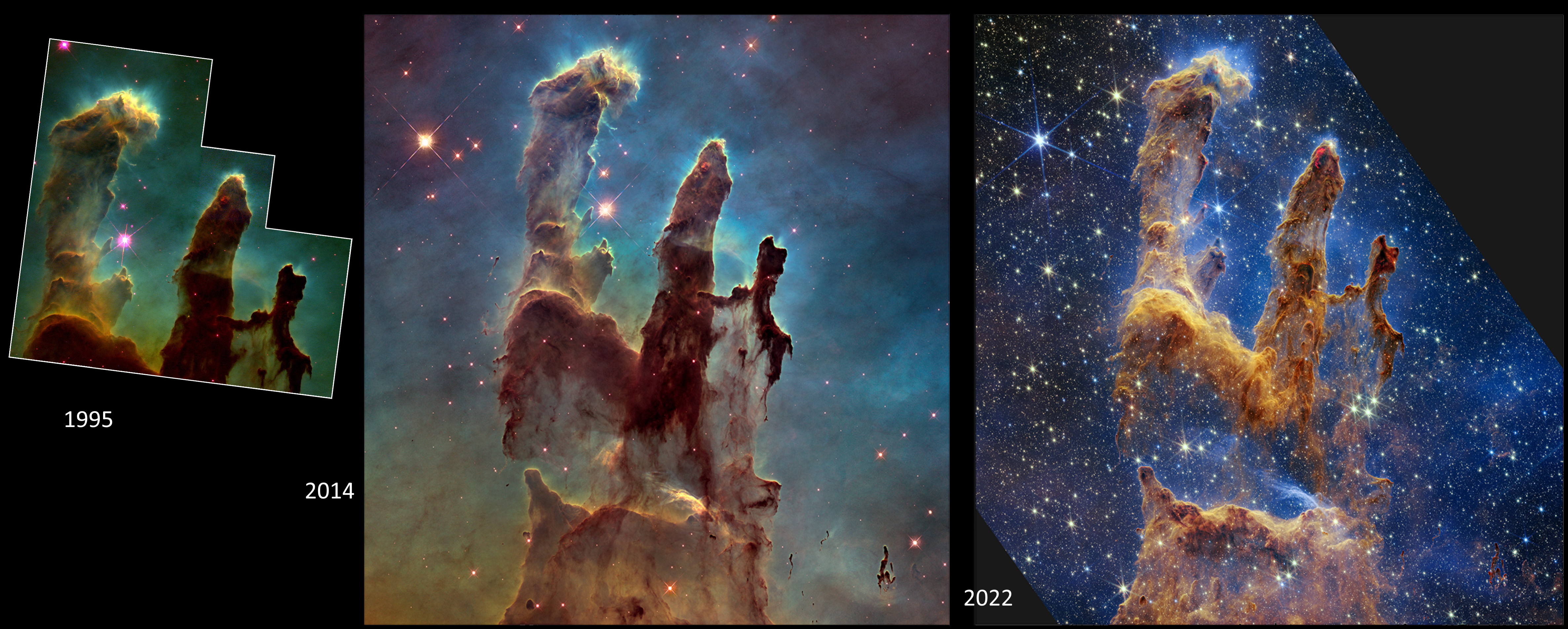
- All throughout the Universe in galaxies like the Milky Way, new stars are born within collapsing, gas-rich molecular clouds.
- A race is occurring as dense clumps of gas and dust collapse to form new stars, while already-formed stars work to blow it away and bring star-formation to an end.
- No place in our nearby Universe better illustrates this intense battle than the Pillars of Creation, 7000 light-years away in the Eagle Nebula. Here’s what our greatest view, ever, reveals to us.
All across the Universe, whenever massive amounts of molecular materials gather in one location, gravitation works to collapse them, triggering the formation of new stars. Inside these dusty, gas-rich regions, typically found in large spiral galaxies just like our Milky Way, a great three-way cosmic race occurs between:
- the relentless effects of gravitation, which cause the gas cloud to fragment and contract,
- the radiative effect of the dust, which cools down and enables gas collapse to form new stars,
- and the feedback effects of the newly formed stars themselves, which work to blow off the remaining neutral matter.
The gas needs to become gravitationally bound overall, then contract into clumps that can form individual star systems, which relies on dust radiating efficiently to form proto-stars. The stars that form do so with a variety of different masses, with the most massive stars emitting the strongest winds and the greatest amount of ultraviolet radiation. That radiation ionizes and evaporates the remaining gas, blowing it away and preventing the formation of future stars. All throughout the Universe, this race continues. But in the Eagle Nebula, just 7,000 light-years away, the Pillars of Creation shows off this phenomenon like nothing else ever seen.
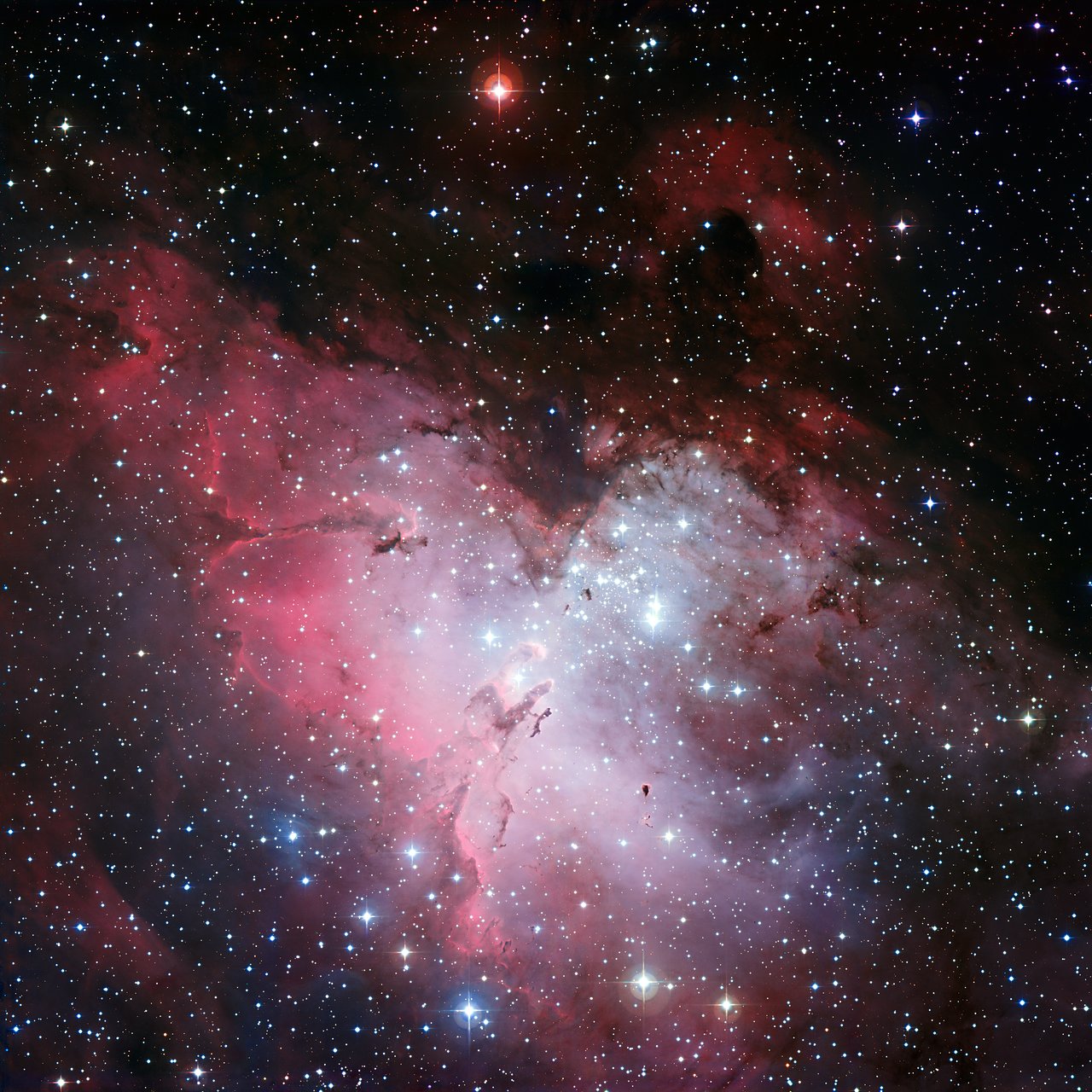
In optical light, this region of space looks just like any other star-forming region you might encounter. Overall, this region glitters brightly, as many brilliant young stars — including short-lived, blue, luminous O-and-B class stars — are concentrated within it. The dust in the nebula, while blocking the light from the stars behind it, also reflect the light from the stars in front of it, creating a brilliant blue-hued reflection nebula.
The neutral hydrogen gas, meanwhile, gets ionized by the intense ultraviolet radiation from these stars, creating a sea of atomic nuclei and free electrons. When hydrogen nuclei, the most common nucleus in the Universe, recombine with these electrons, the electrons cascade down the energy levels, emitting infrared, optical, and ultraviolet light. There’s a particular transition, from the 3rd-lowest energy level to the 2nd-lowest energy level, that emits light very strongly at a very particular wavelength: 656.3 nanometers. This corresponds to red light in human vision, which is why parts of the nebula appear red.
However, perhaps the most striking feature is the silhouetted dust, which appears as dark clouds within the Eagle nebula.

These dust-rich regions, highlighted in the image above based on the locations where certain advanced observatories have looked at them in great detail, represent the last refuges where new star-formation is still occurring. The Eagle Nebula, although nearing the end of its life in terms of being an active birthplace of new stars, still has a way to go before the cessation is complete. In particular, toward the center of the nebula, a particularly dense collection of dusty tendrils can be found. These three column-like structures, appropriately, are known as the Pillars of Creation.
Although they had been identified from ground-based images long ago, it was only in 1995 that the Hubble Space Telescope took what quickly became an iconic image of these pillars. In fact, aside from the Hubble Deep Field image, it’s arguable that Hubble’s initial image of the Pillars of Creation was the single most important image taken with the Hubble Space Telescope during the first decade or so of its lifetime. Showcasing the presence of a variety of elements and molecules, the pillars are perhaps notable for what they obscure: the light from all the stars and starlight behind them. This 1995 image, even today, in 2022, is breathtaking to behold.
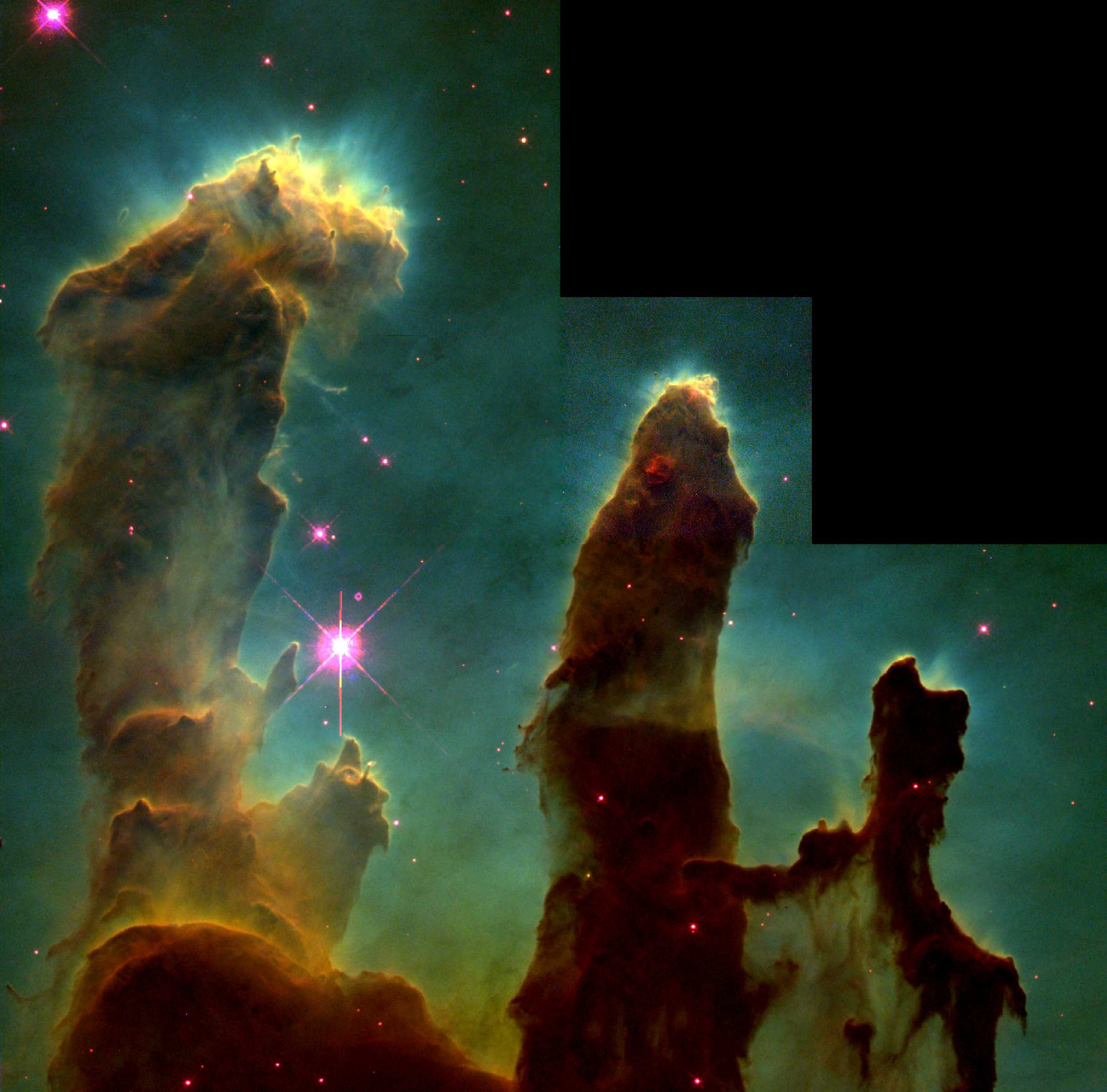
Because this nebula is 7,000 light-years away and in a region rife with hot, young stars, people immediately began wondering whether these pillars were still intact today, or whether a stellar cataclysm such as a supernova hadn’t already destroyed them, with the light of their destruction still en route to Earth. Other observatories that were capable of looking at these pillars in different wavelengths of light were called upon to decide the issue, but the results were anything but fully conclusive.
In X-ray light, NASA’s Chandra X-ray observatory found a number of point sources: evidence of stellar remnants like neutron stars and black holes, but no supernova remnant was seen among them.
In infrared light, NASA’s Spitzer observatory saw emission features that couldn’t be accounted for, suggesting that perhaps a recent supernova had gone off. Farther into the infrared, ESA’s Herschel telescope also viewed the nebula, finding lots of cold gas capable of forming new stars, but no evidence for a stellar cataclysm.
It wouldn’t be until 2014, nearly 20 full years after the original Hubble image was created, that Hubble would return to this object: this time, with a superior suite of instruments on board.
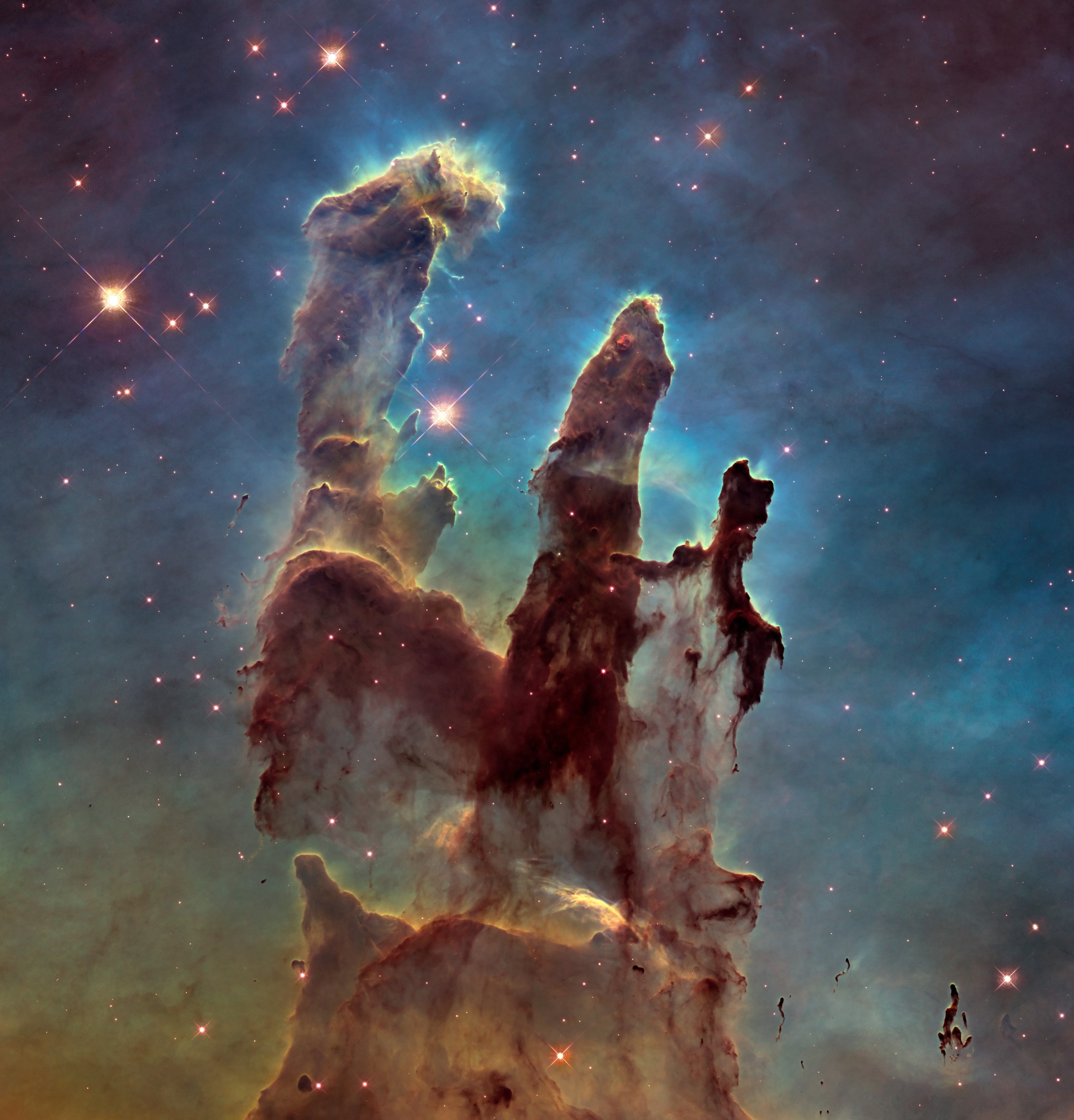
This new view of the Pillars of Creation had a wild set of advantages over the earlier view. For one, it had a much wider field-of-view, enabling us to view the larger surrounding, connected (and disconnected) dusty structures. For another, its upgraded instruments gave us a greater set of wavelength coverage, enabling us to identify atomic and molecular details that couldn’t be identified before. And by taking advantage of the greater light efficiency, there was even an enhancement in image quality and slight improvement in resolution.
But the most important feature of all?
The fact that ~20 years had passed. On a cosmic timescale, 20 years is a mere blink-of-an-eye. Stars, after all, typically live for billions or even trillions of years. But in a star-forming region, where dramatic changes can occur over thousands of years, 20 years is suddenly significant. The pillars themselves show evidence of evolution and evaporation, where the rate of evaporation tells us:
- no, a supernova or other cataclysm hadn’t recently occurred,
- that the pillars were indeed evaporating, but only gradually,
- and that the timescale for evaporation was on the order of ~100,000 years.
Meanwhile, Hubble also was now equipped with a set of near-infrared eyes, enabling a wildly different view.
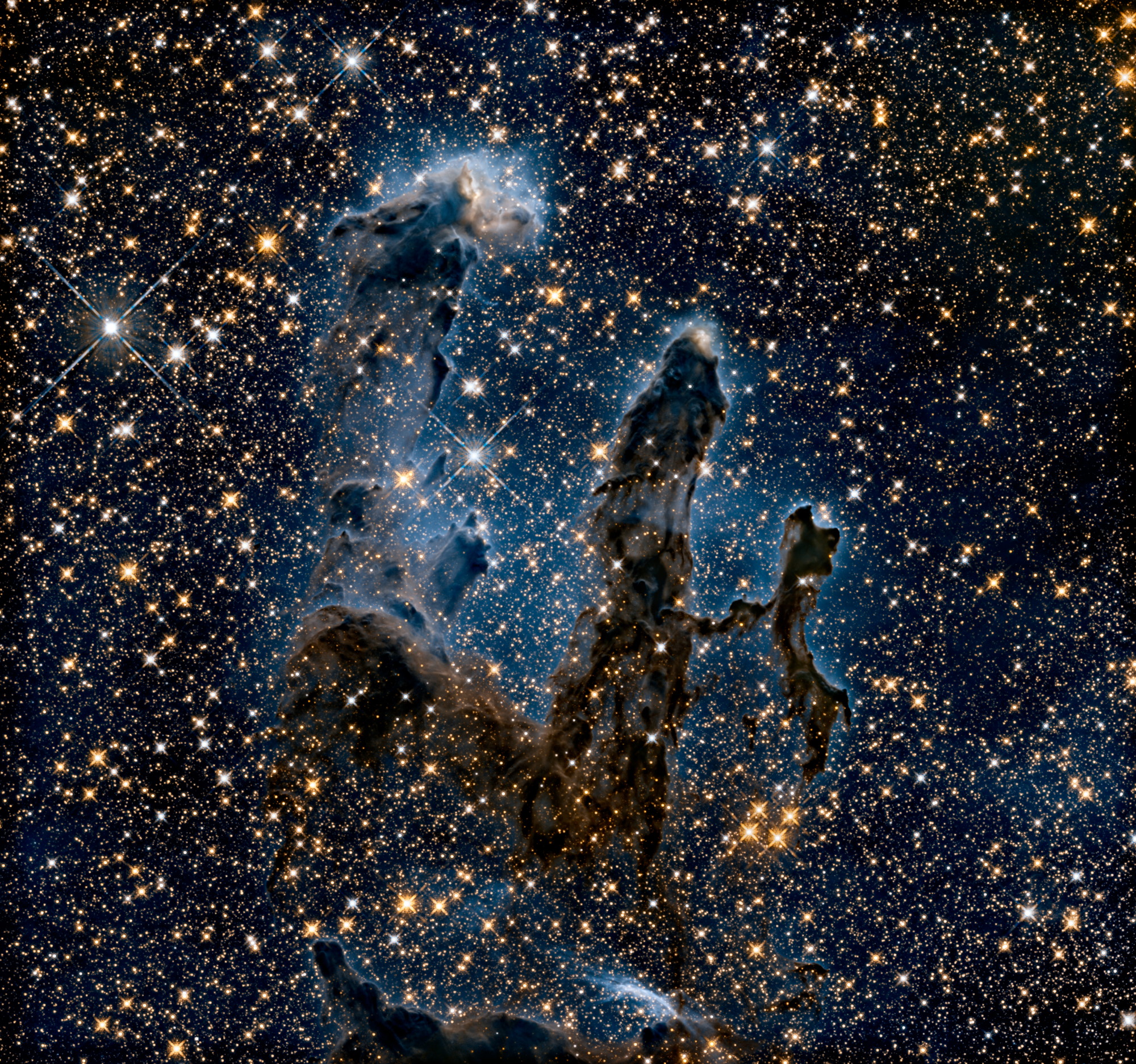
The whole reason that dust appears as a silhouette in optical light has everything to do with the size of the dust grains themselves and the properties of light. In general, unless there are specific transitions within an atom or molecule that absorb or emit light of particular wavelengths, the two things you’ll want to compare are the size of a dust grain with the distance that a full wavelength of light covers.
If the light is much shorter in wavelength than the size of a dust grain, the light gets easily absorbed, where it heats up the dust and causes the dust to re-radiate energy in longer wavelengths of light.
If the light is much longer in wavelength than the size of a dust grain, the light simply passes through the dust, enabling us to “see through” the material in that particular wavelength of light.
And if the light is of a comparable wavelength to the size of a dust grain, the light gets partially absorbed and partially transmitted, with the densest regions doing a better job of absorbing and the sparser regions appearing as relatively transparent.
As you can see, above, Hubble’s near-infrared eyes treat the dust as largely transparent, but the densest, knottiest regions of dust still can absorb some of the light. Many of the stars revealed by this infrared view are not even within the dusty pillars, but significantly behind them. Of course, we’re now living in the era of the James Webb Space Telescope (JWST), and its first view of the Pillars of Creation has just been unveiled.
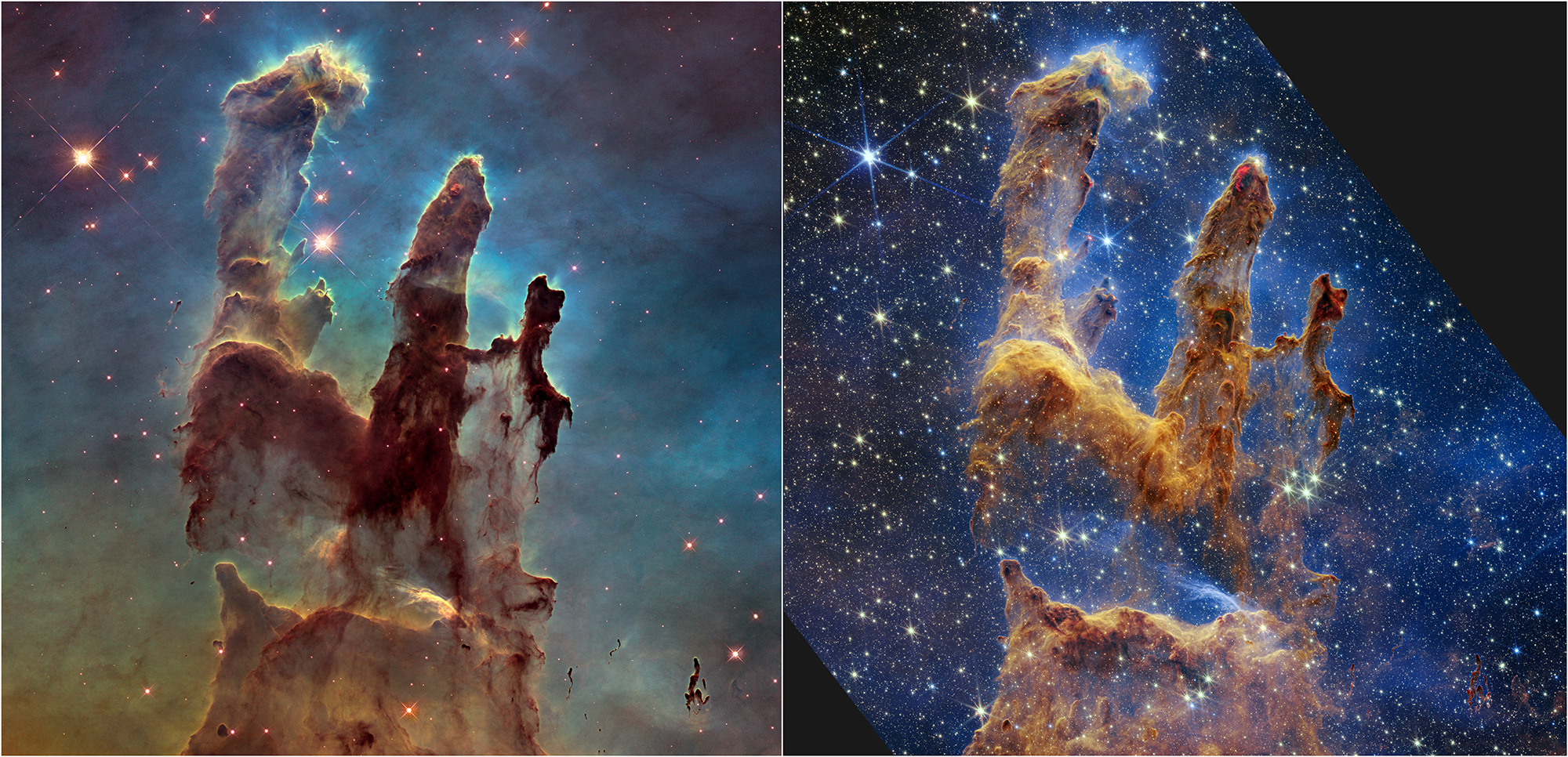
Compared to the Hubble (mostly optical) view on the left, the JWST view on the right shows features we’ve never been able to see before, and certainly not in this level of detail or at this resolution. Even with only a near-infrared camera (NIRCam) view of the Pillars of Creation, JWST goes out to almost triple the wavelength of Hubble’s longest wavelength capabilities. As a result, we’re not only seeing the starlight that passes through the dust, we’re actually able to begin perceiving the re-radiated heat from the dust that’s absorbed all of that starlight in the optical and ultraviolet.
The dusty pillars, which appeared so solid in the Hubble imagery, now appear more as they actually are: as evaporating globules of neutral matter, being boiled away not primarily from the inside, but from external radiation arising from bright blue stars well outside of the pillars themselves. A few stars are indeed forming within these pillars, but for the most part, the rate of cooling and collapse is too slow to lead to many more new ones. Aside from a few protostars already identified inside, it’s likely that the star-formation that will occur within the pillars is almost already complete.
Still, this near 30-year timelapse — from 1995 to 2014 to 2022 — shows a remarkable evolution in our views of this object.
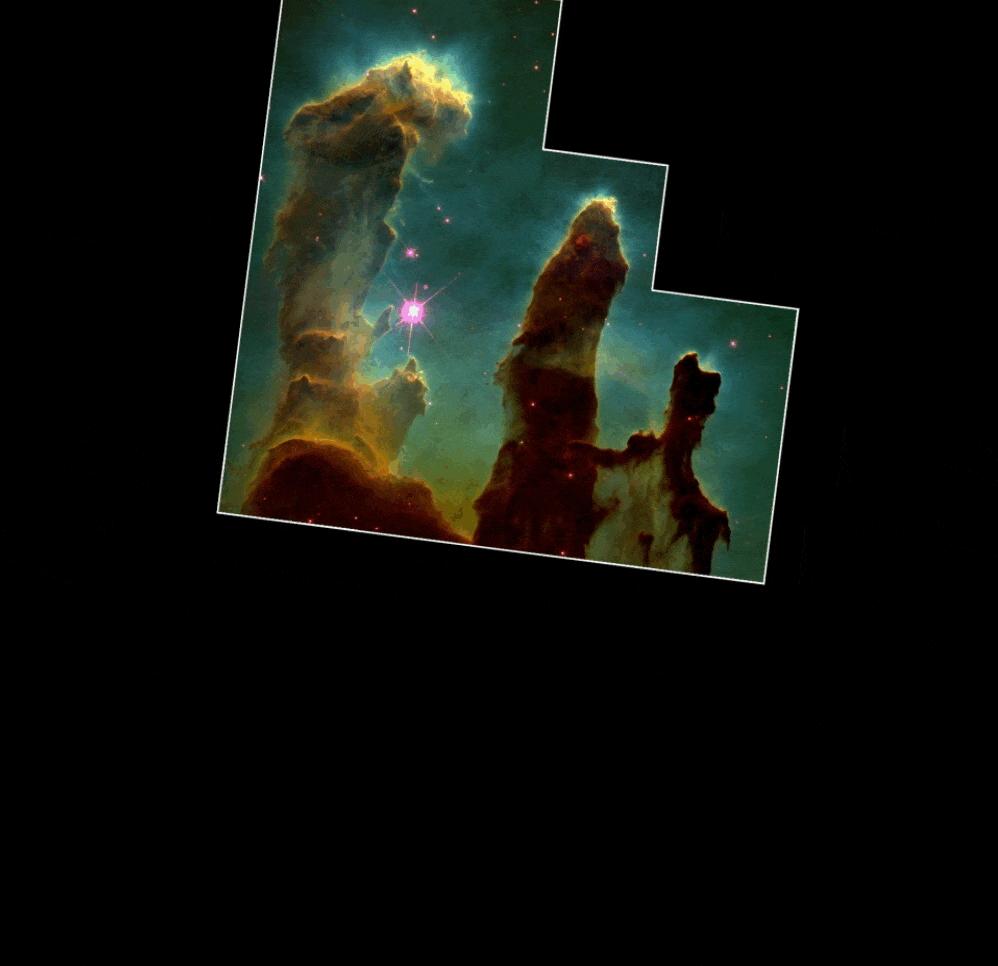
One of the more interesting things to do, because of the ultra-high-resolution nature of both Hubble and JWST, is to take a look at a few specific regions of interest that were imaged by all three sets of observations, and to compare them both side-by-side and in an animated format. The first such region that’s worth an in-depth look is the top of the largest, main pillar, which does indeed have a semi-massive protostar (about 5-6 times the Sun’s mass) inside of it, still growing at present.
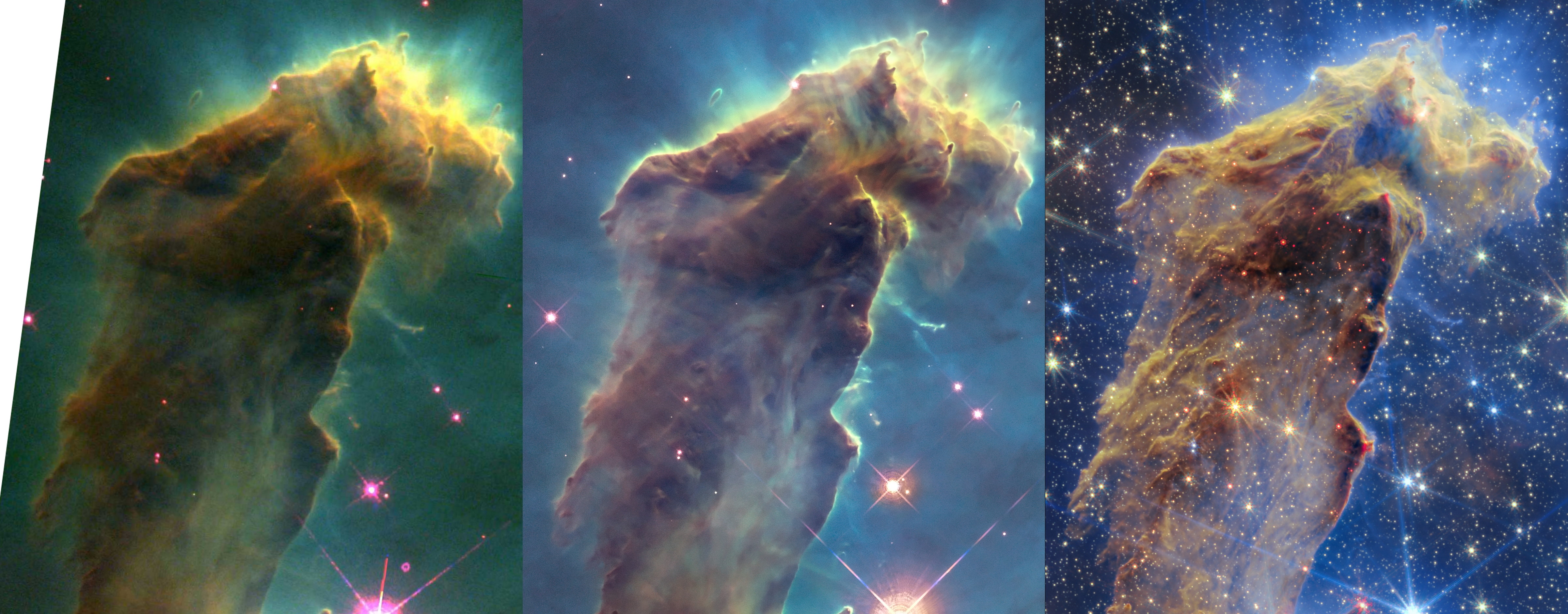
Strikingly, you can see how thick the light-blocking dust appears to be in the Hubble views of this region of space, but how the shapes and contours of the dust appear in the JWST view. Many of the background stars seen through the pillars are tremendously reddened by the pillars themselves, while the stars most clearly visible to Hubble’s eyes are intrinsically very blue when seen by JWST. JWST reveals far greater numbers of stars and far brighter ones than Hubble can see: these are stars that emit more of their light in the redder portions of the spectrum, where JWST is more sensitive than Hubble.
You can also see how the wispy features seen in the Hubble images translate into fine filaments and excel at reflecting light, particularly shorter-wavelength light, when viewed by JWST. This pillar is not only evaporating, but the JWST view shows how thin and tenuous the pillar is over much of its volume, a feature that cannot be seen with Hubble’s limited wavelength coverage alone.

Another spectacular, related, but very different view comes courtesy of taking a detailed look at the second, smaller pillar. Yes, again, there’s a proto-star forming in the “tip” of this pillar: something that’s only suggested in the 1995 image, more apparent in the 2014 image, but clearly shines through the gas in the JWST (2022) image. Additionally, a reddish clump, seen in the Hubble images at about the 7 o’clock position relative to that protostar looks very different — as though it’s moved upward and inward — in the JWST image: a possible sign of energy transport happening within the pillar itself.

Again, the brightest stars seen by JWST’s eyes are not the same as the brightest stars as seen by Hubble’s eyes. While the pillar appears mostly monolithic to Hubble, the gassy details, and the eroding nature of the material, are clearly revealed by JWST. The differences toward the lower half of the image are exceptionally striking, as gaseous knots and internal stars, particularly reddened by the densest clumps of dust, are revealed in great detail by JWST and not by Hubble.
Outside of the pillars, the sheer number of stars is breathtaking as seen by JWST, and virtually non-existent in the Hubble views. The brightest star in the image, shown just to the left of the central portion of the pillar in the image, is completely invisible to Hubble’s eyes but is brilliant to JWST. This likely means it’s a red giant star, but one located well behind the main gas and dust that makes up the nebula. While Hubble can reflect foreground starlight only, JWST’s eyes allow background light to shine through the regions where the dust is anything but its absolute thickest.

Finally, I thought it would be absolutely fascinating to take a look at the “bridge” connecting the second and third pillars, which Hubble sees as completely dark, with only one faint star poking through the thin point of the bridge just to the left of the middle. To the right, there’s a dense, larger knot of gas, and then below it, light-blocking wisps that give way to a tooth-shaped structure beneath them. In between the bridge and the tooth, some of the reflected light shines through, with the pillars on either side forming what appears to be a supporting structure.
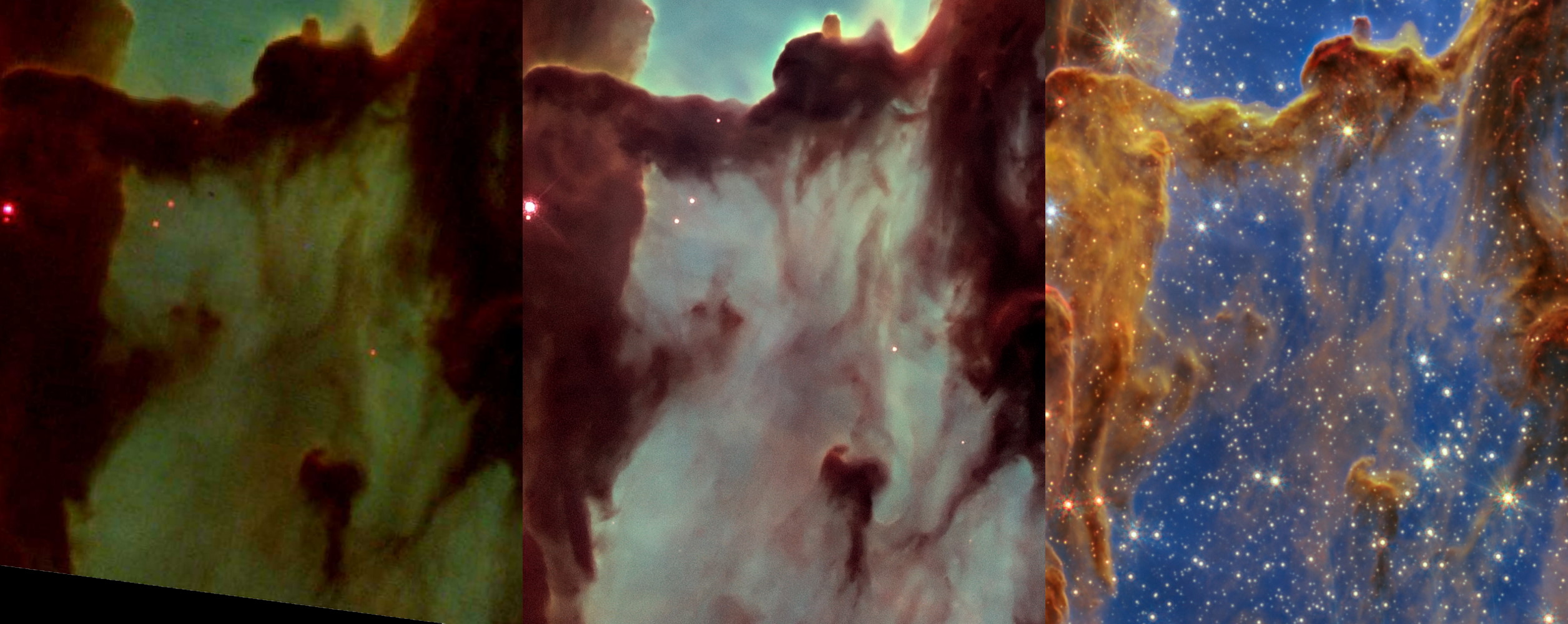
But when the JWST view comes into play, you can see what the true nature — dust and all — of this region is really like. The bridge itself is relatively thin, and the wisps beneath it are barely substantial at all: this is neutral matter nearing the final stages of its evaporation. The pillars, which again appear monolithic, thick, and dark to Hubble’s eyes, have their carved-out nature revealed by JWST, where a great many background stars of all different glittering colors shine through. As you can see, with the exception of a few knotty regions, the dust is so thin that the stars are barely reddened at all.
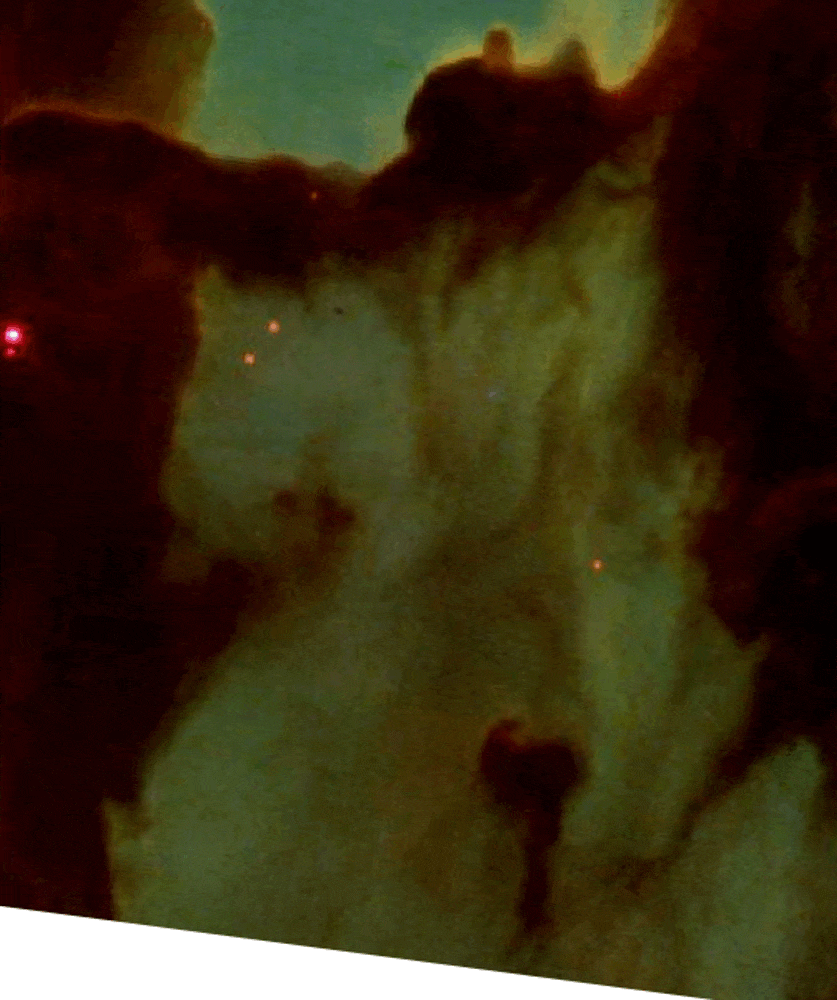
With seven times the light-collecting area of Hubble, JWST is far superior in both resolution and image quality. With its advanced suite of instruments and fantastic set of wavelength coverage, it can reveal details that could never have been seen prior to it. And, perhaps most excitingly, the targets we’re viewing during this remarkable first year of JWST’s science run represent the no-brainer images to take: the things we’ve seen before and know will be enhanced by leveraging the power of JWST.
They don’t include the risky science: the use cases where the rewards are unknown and the views will have a chance to surprise us entirely. As remarkable as these images are, they don’t represent what will eventually be the most surprising and iconic view that JWST will reveal to us. As you marvel at what we’re seeing and learning about the Universe, remember: Hubble is presently in its 32nd year of science operations, and JWST has been performing science for only about 4 months, with ~98%+ of its lifetime still ahead of it. These glorious new views, although they’re amazing in their own way, represent only the first taste of what JWST will discover. With each new set of data and images, the Universe will come into focus in a way humanity has never known before now.
